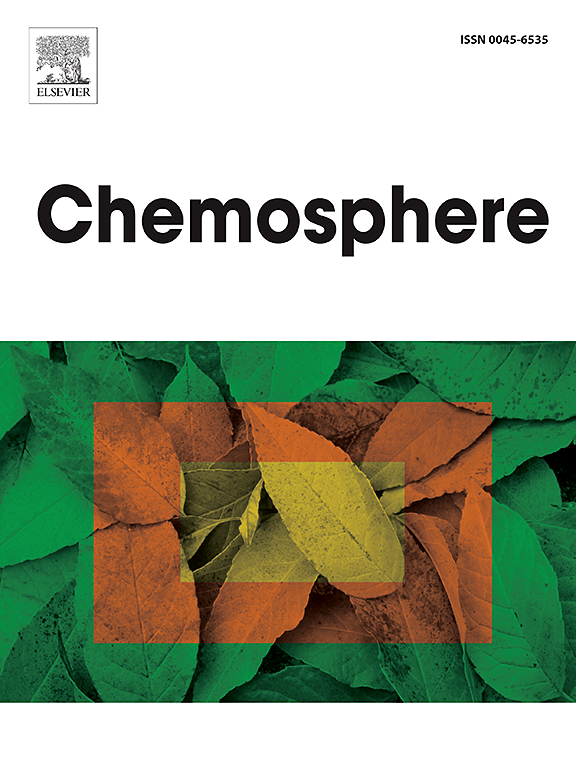Microplastic contamination in the western Arctic water column: A transition from pristine to polluted
IF 8.1
2区 环境科学与生态学
Q1 ENVIRONMENTAL SCIENCES
引用次数: 0
Abstract
The Arctic Ocean, once regarded as a pristine and untouched icy expanse, now faces an increasing threat from microplastic (MPs, <5 mm) pollution. This study presents quantitative data on MP contamination in the water column of the western Arctic Ocean. A total of 324 replicate water samples were collected using a CTD (Conductivity, Temperature, and Depth) rosette sampler from depths ranging from 9 to 297 m. The isolated MPs were analyzed using micro-Fourier Transform Infrared Spectroscopy (μ-FTIR). The average abundance of MP was 0.06 particles L−1, and the Beaufort Sea station (BFS 26) recorded the highest concentration (0.22 particles L−1). Blue-coloured and fibrous nature, small MPs (<500 μm) primarily composed of polyolefins were dominant. The distribution of MPs in the water column was as follows: Polar Mixed Layer (59 %), Pacific or Atlantic halocline (22 %), and the Intermediate layer of Atlantic water (19 %). This study provides valuable insights into the vertical distribution of MPs, their characteristics, and the probable sources of the influx of MPs into this region.

北极西部水柱中的微塑料污染:从原始到污染的过渡
北冰洋,曾经被认为是一片原始的、未受影响的冰原,现在正面临着微塑料污染日益严重的威胁。本研究提供了北冰洋西部水柱中多聚氰胺污染的定量数据。使用CTD(电导率、温度和深度)玫瑰花状采样器,从9至297 m的深度共收集了324个重复水样。利用微傅里叶变换红外光谱(μ-FTIR)对分离的MPs进行分析。MP的平均丰度为0.06个粒子L−1,其中波弗特海站(BFS 26)的浓度最高,为0.22个粒子L−1。蓝色和纤维性,主要由聚烯烃组成的小MPs (<500 μm)占主导地位。MPs在水柱中的分布为:极地混合层(59%)、太平洋或大西洋盐跃层(22%)和大西洋水中间层(19%)。这项研究为MPs的垂直分布、它们的特征以及MPs涌入该地区的可能来源提供了有价值的见解。
本文章由计算机程序翻译,如有差异,请以英文原文为准。
求助全文
约1分钟内获得全文
求助全文
来源期刊

Chemosphere
环境科学-环境科学
CiteScore
15.80
自引率
8.00%
发文量
4975
审稿时长
3.4 months
期刊介绍:
Chemosphere, being an international multidisciplinary journal, is dedicated to publishing original communications and review articles on chemicals in the environment. The scope covers a wide range of topics, including the identification, quantification, behavior, fate, toxicology, treatment, and remediation of chemicals in the bio-, hydro-, litho-, and atmosphere, ensuring the broad dissemination of research in this field.
 求助内容:
求助内容: 应助结果提醒方式:
应助结果提醒方式:


